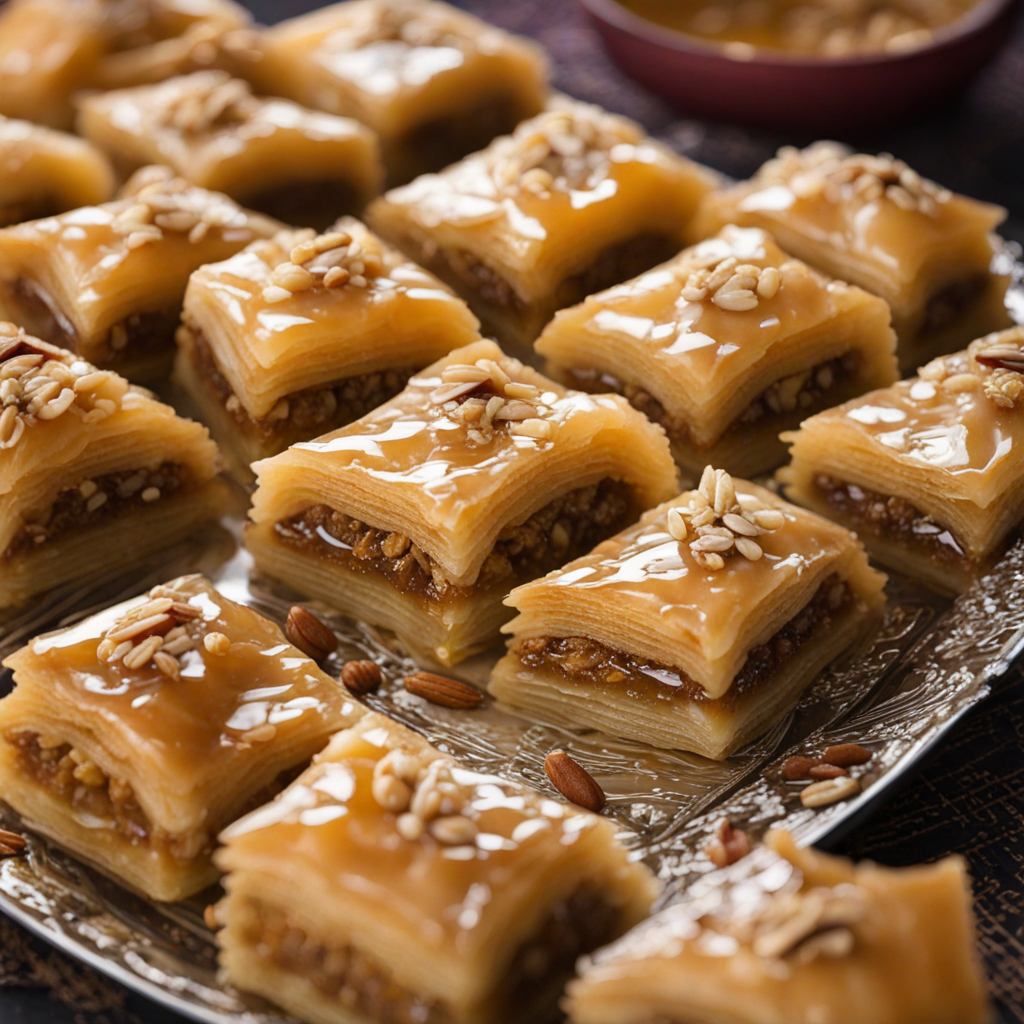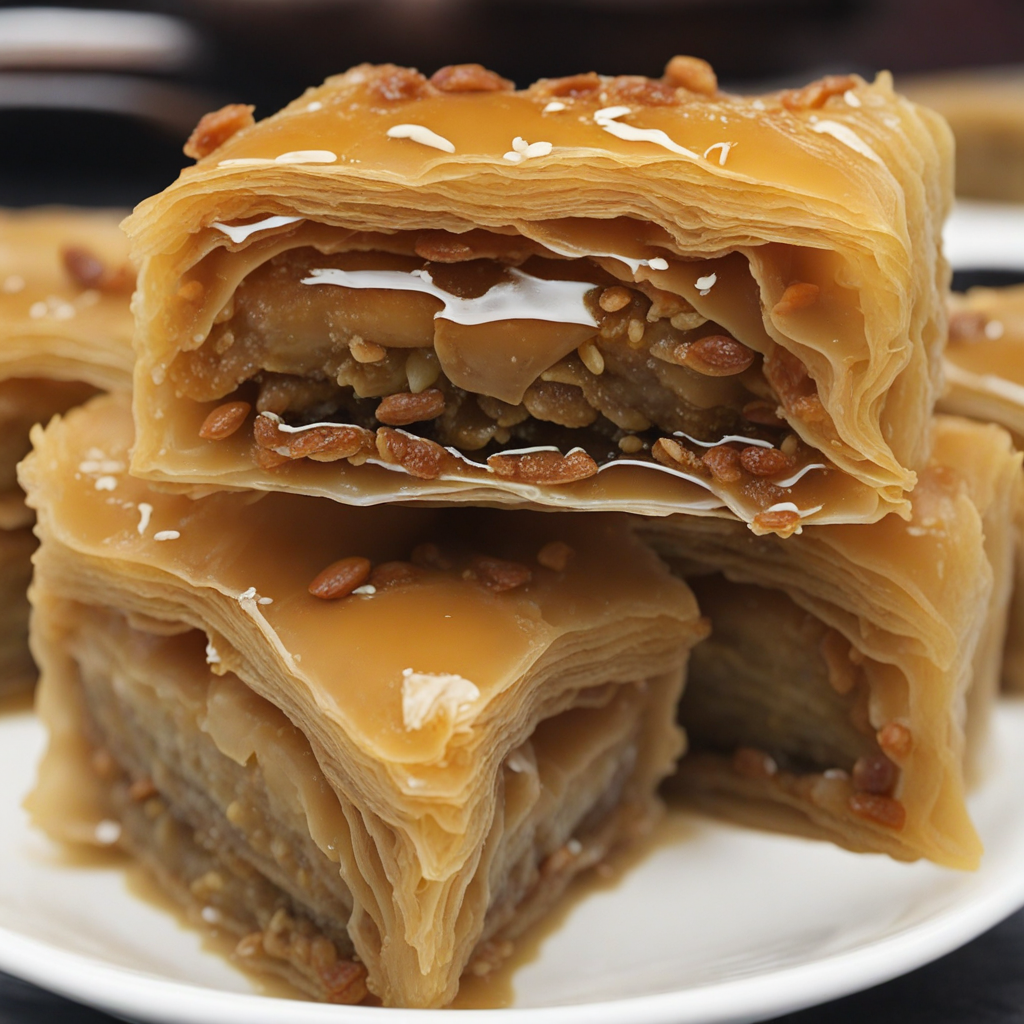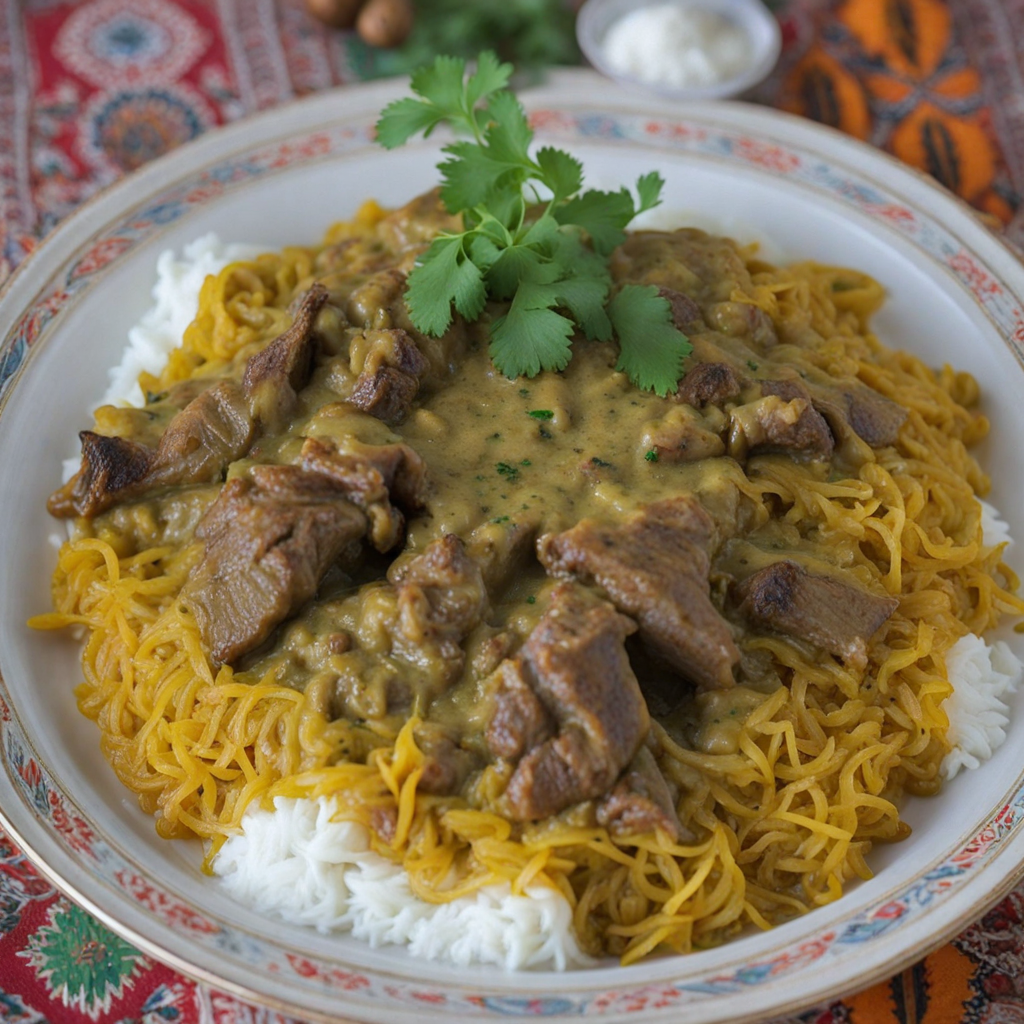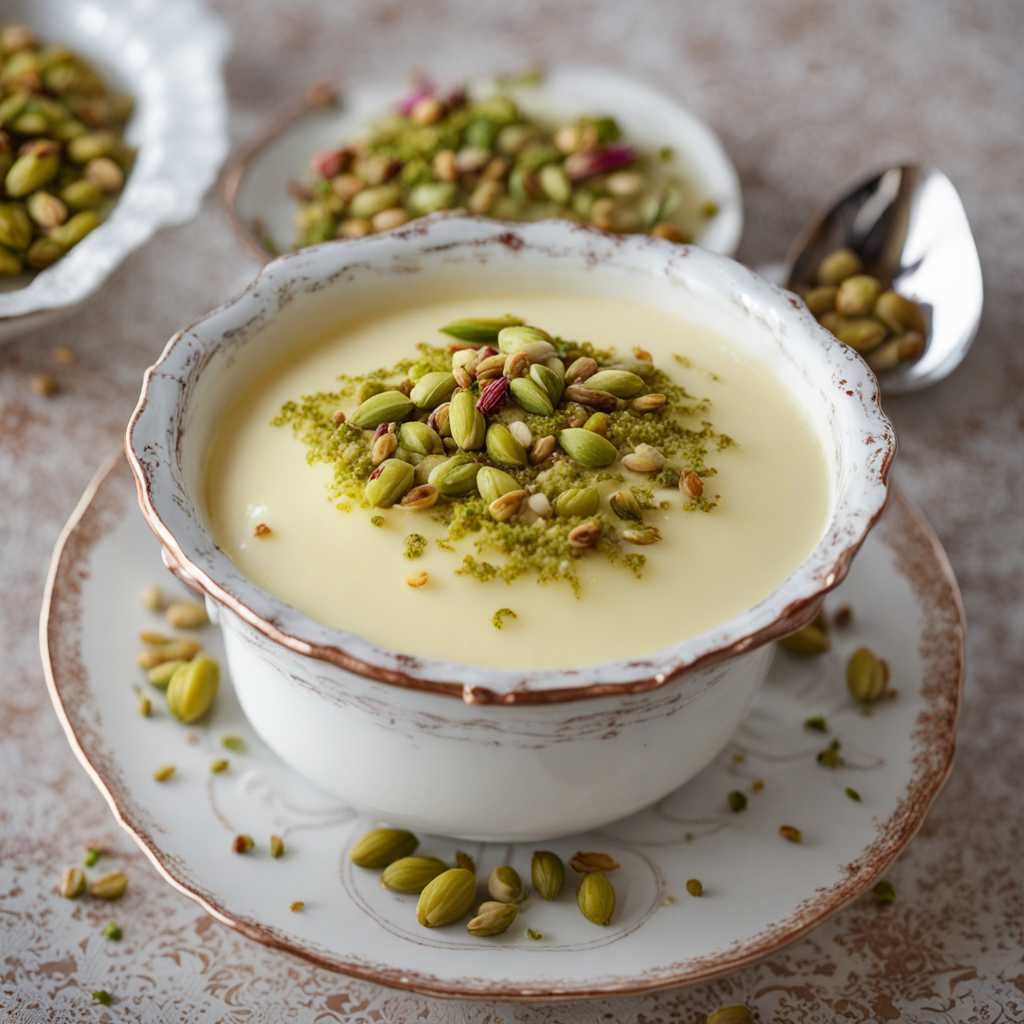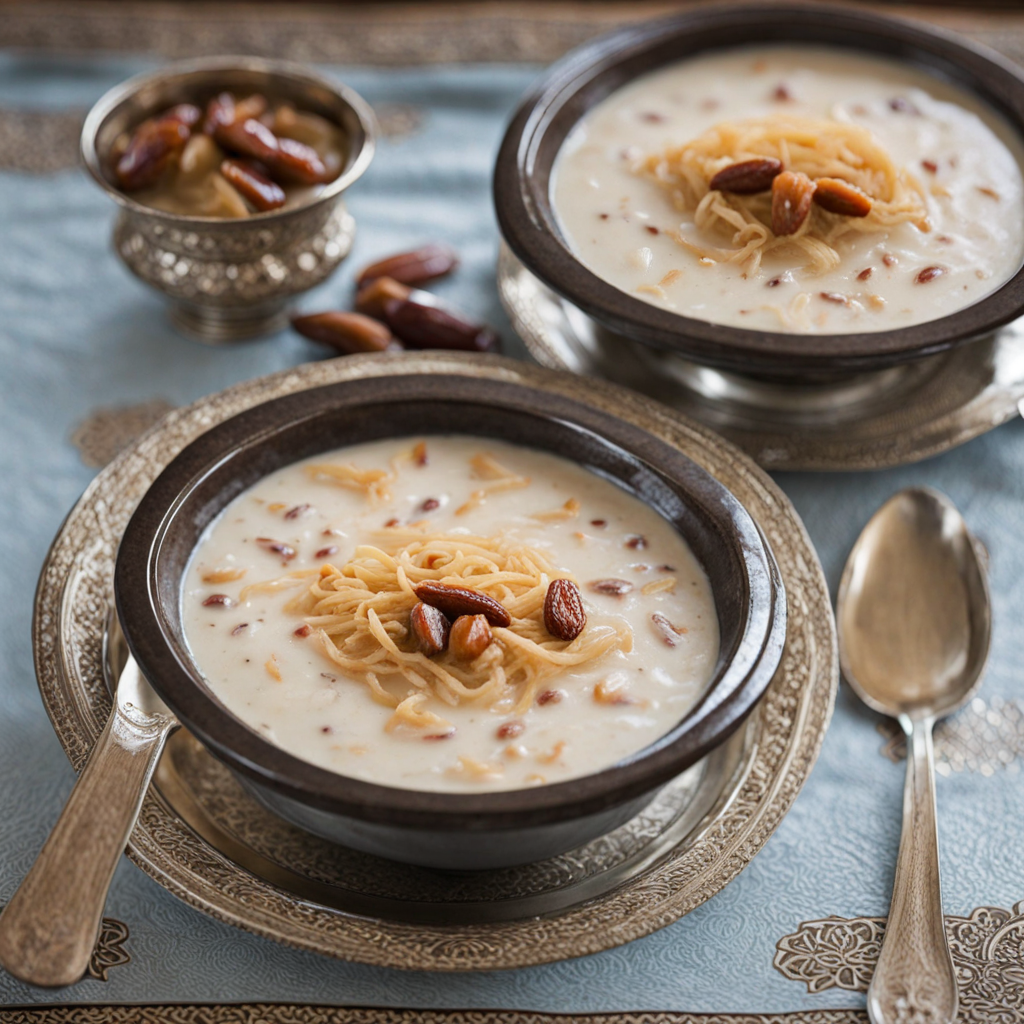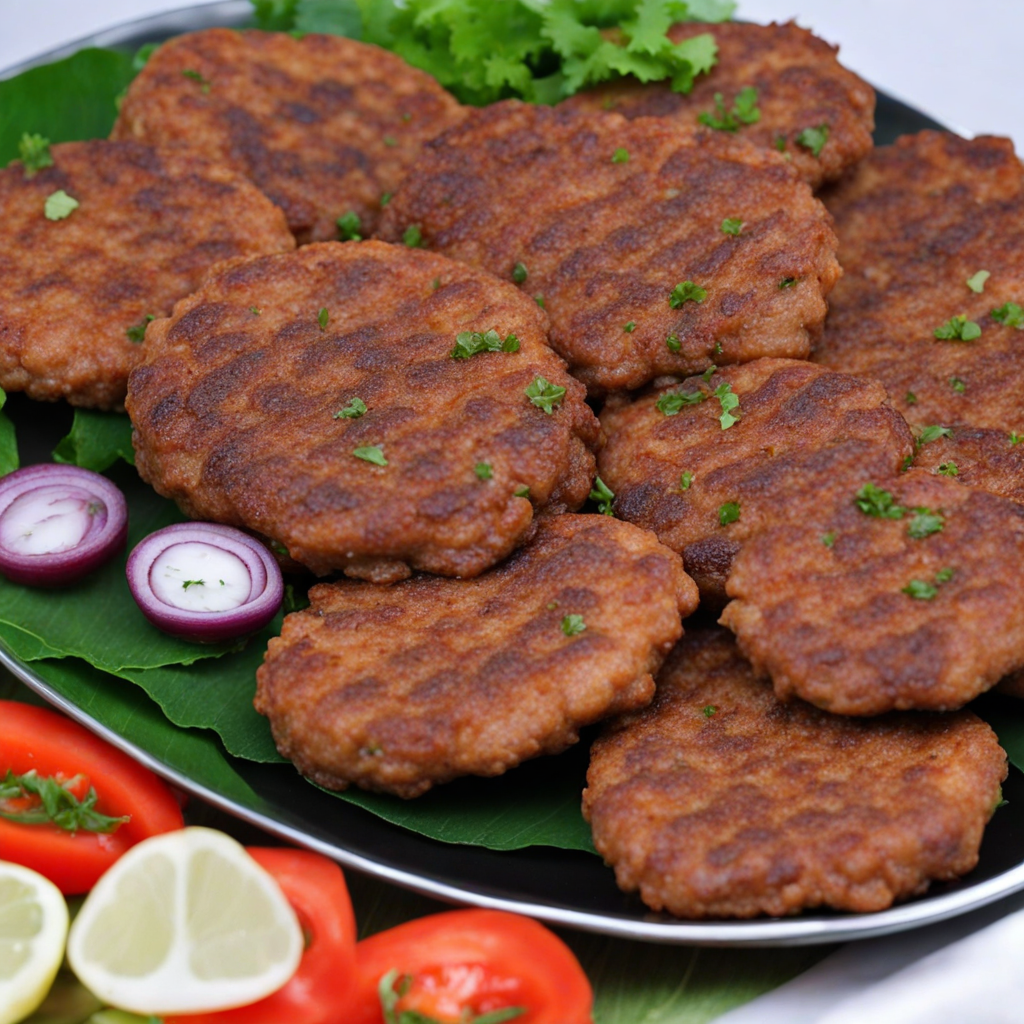Baklava
Baklava is a rich and indulgent pastry that hails from the heart of Afghanistan, known for its intricate layers and sweet, nutty flavor. This delightful dessert is made from thin sheets of phyllo dough, which are meticulously layered with a mixture of finely chopped nuts, such as pistachios, walnuts, or almonds. Each layer is generously brushed with melted butter, creating a flaky and crispy texture that contrasts beautifully with the luscious filling. The combination of textures makes every bite a delightful experience, as the crunch of the nuts harmonizes with the delicate layers of pastry. Once assembled, the baklava is cut into diamond or square shapes before being baked to golden perfection. The final touch is a generous soaking in a sweet syrup, typically made from sugar, water, and flavored with hints of rosewater or orange blossom. This syrup seeps into the layers, adding moisture and a glossy finish, while enhancing the overall sweetness. The result is a decadent treat that is both sweet and aromatic, making it a favorite for celebrations and special occasions. The flavor profile of Afghan baklava is truly unique, with a balance of sweetness and nuttiness that captivates the palate. The use of spices such as cardamom or cinnamon can also be found in some variations, providing an additional layer of warmth and complexity. Served alongside a cup of green tea or as a dessert after a meal, baklava is not just a treat; it’s a culinary experience that invites you to savor each bite and appreciate the rich traditions of Afghan cuisine.
How It Became This Dish
Origins of باقلوا باقلوا, known as baklava in many regions, is a delicious pastry that holds a rich cultural heritage in Afghanistan. While its precise origins are debated, it is generally believed that baklava traces back to the ancient civilizations of the Near East, particularly among the Assyrians, who used layers of dough filled with nuts around 800 B.C. The recipe evolved significantly as it spread through various empires and cultures, including the Greeks and Ottomans. In Afghanistan, باقلوا has become a staple in traditional sweets, particularly during festive occasions and celebrations. The Afghan variant often features unique local ingredients, such as walnuts and pistachios, and is sweetened with syrup made from sugar and rosewater, offering a distinct flavor profile that sets it apart from its counterparts in other parts of the world. Cultural Significance باقلوا plays a significant role in Afghan culture, particularly during celebrations such as weddings, religious holidays, and family gatherings. It symbolizes hospitality and generosity, as offering sweets to guests is a long-standing tradition in Afghan society. The preparation of باقلوا is often a communal activity, bringing families together to share recipes, techniques, and stories that have been passed down through generations. As a symbol of unity, باقلوا is not just a treat for the palate; it represents the vibrant tapestry of Afghan culture, where various ethnic groups contribute their own touches to the recipe. For instance, the use of various nuts and spices reflects the diverse agricultural bounty of the region, while the meticulous layering of dough demonstrates the artistry and skill of Afghan bakers. Development Over Time The development of باقلوا in Afghanistan has been influenced by various factors, including trade, migration, and cultural exchanges. As the Silk Road traversed through Afghanistan, merchants brought new spices, nuts, and cooking techniques, enriching the culinary landscape of the region. This exchange of ideas also allowed for the introduction of different types of dough and filling combinations, reflecting the adaptability of Afghan cuisine. In contemporary Afghanistan, the influence of globalization has led to a resurgence of interest in traditional sweets, including باقلوا. Many Afghan families are rediscovering age-old recipes and techniques, often incorporating modern twists while preserving the essence of the dish. This blend of tradition and innovation is creating a new appreciation for Afghan culinary heritage, ensuring that باقلوا remains an integral part of the nation's identity. Variations and Regional Differences Within Afghanistan, باقلوا exhibits a variety of regional differences that showcase local preferences and ingredient availability. For instance, in the northern provinces, bakers might prefer to use almonds and honey, while in the southern regions, a greater emphasis may be placed on the use of pistachios and cardamom. These variations not only enhance the flavor but also reflect the agricultural diversity of Afghanistan, where certain nuts and spices flourish in different climates. Moreover, the preparation methods can vary significantly, with some families opting for a thicker, more decadent version of باقلوا, while others may prefer a lighter, flakier pastry. Regardless of the variation, the fundamental elements—layers of dough, nuts, and sweet syrup—remain consistent, serving as a testament to the enduring popularity of this beloved dish. Modern-Day Bاقلوا In modern-day Afghanistan, باقلوا is not just a beloved dessert but also a means of economic sustenance for many families. Small bakeries and confectioneries have emerged, offering artisanal versions of this traditional sweet to both locals and tourists. This development has provided opportunities for Afghan women, particularly, to engage in entrepreneurship, allowing them to share their culinary skills while generating income for their families. Additionally, the rise of social media platforms has allowed Afghan bakers to showcase their skills and connect with a global audience. Recipes, tutorials, and even live baking sessions have gained popularity, promoting the rich culinary heritage of Afghanistan far beyond its borders. The appreciation for باقلوا has transcended cultural boundaries, with people from various backgrounds eager to learn about and taste this exquisite Afghan delicacy. Conclusion: A Symbol of Resilience Throughout its history, باقلوا has remained a steadfast symbol of resilience and cultural pride for the Afghan people. Despite the challenges faced by the nation, including years of conflict and instability, the tradition of making and sharing باقلوا has persisted. Each layer of dough and every sprinkle of nuts encapsulates the spirit of Afghan hospitality, showcasing a rich cultural narrative that continues to thrive. As Afghanistan continues to navigate its modern challenges, the preparation and enjoyment of باقلوا serve as a reminder of the country's rich history and the enduring bonds of community and family. This beloved pastry is not merely a dessert; it is a celebration of life, love, and the shared experiences that unite people across generations and borders.
You may like
Discover local flavors from Afghanistan


